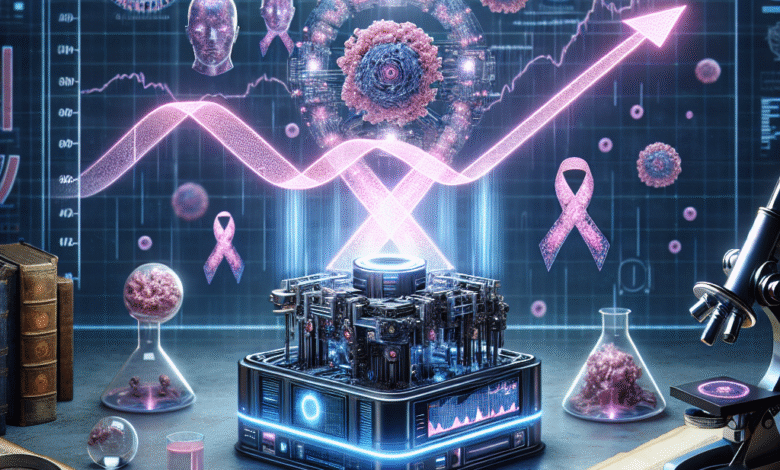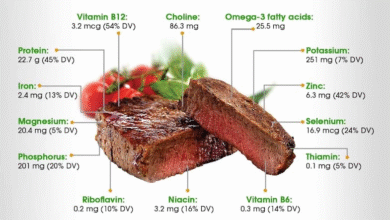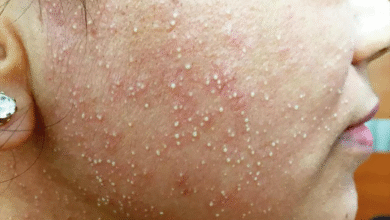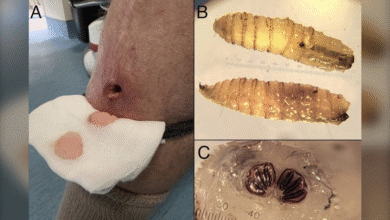AI Breast Cancer Risk Prediction Tool Receives FDA Approval

AI Breast Cancer Risk Prediction is revolutionizing how we approach early detection and assessment of breast cancer. With the FDA’s approval of Clairity Breast AI, a cutting-edge tool designed to analyze mammograms, healthcare providers can now predict a five-year risk of breast cancer with unprecedented accuracy. This innovation leverages advanced mammogram technology to identify subtle visual cues that may indicate potential risk. As traditional methods for breast cancer risk assessment often overlook over 85% of cases occurring in women without family histories, Clairity’s AI provides a more personalized approach to cancer screening. The implications of this technology could significantly enhance early detection strategies and improve outcomes for millions of women globally.
In the realm of breast cancer detection, advanced technological solutions are becoming increasingly essential. The introduction of AI-based platforms for assessing breast cancer risk offers a modern approach to understanding individual vulnerabilities. With tools like Clairity Breast AI leading the charge, healthcare professionals can utilize innovative mammogram analytics to tailor screenings to each patient’s unique profile. By moving beyond traditional risk indicators, such as age and family history, this new era of personalized cancer screening aims to deliver more accurate and effective evaluations. As these FDA-approved AI tools gain traction, they promise to transform cancer risk management and early intervention.
Understanding FDA Approved AI Tools for Breast Cancer Risk Assessment
The recent approval of Clairity Breast, the first FDA authorized AI tool for predicting breast cancer risk, marks a significant milestone in the field of personalized cancer screening. This innovative technology represents a shift from conventional risk assessment models, which typically rely on limited factors such as age and family history. By using sophisticated algorithms and machine learning, Clairity Breast evaluates a patient’s mammogram images to identify subtle indicators that may predict the likelihood of developing breast cancer within the next five years. This advancement not only enhances our understanding of breast cancer risk but also paves the way for more targeted prevention strategies.
Incorporating AI into breast cancer risk assessment allows for a more nuanced understanding of each patient’s risk profile. Current models are often skewed towards demographics with a primarily European Caucasian background, leaving a noticeable gap for diverse populations. With Clairity Breast, healthcare providers can access a validated five-year risk score based on comprehensive analysis rather than just historical data. This means that women who have no family history of breast cancer – which constitutes about 85% of diagnosed cases – can receive tailored screenings that take into account unique biological factors, improving overall outcomes in breast health.
Frequently Asked Questions
What is AI Breast Cancer Risk Prediction and how does it work?
AI Breast Cancer Risk Prediction utilizes advanced artificial intelligence tools, like Clairity Breast, to analyze mammogram images for indicators of breast cancer risk. This FDA-approved tool generates a validated five-year risk score based on subtle patterns in the images that may not be visible to the human eye.
How has the FDA-approved AI tool improved breast cancer risk assessment?
The FDA-approved AI tool, Clairity Breast, has enhanced breast cancer risk assessment by providing a more accurate prediction that considers variables beyond age and family history. It uses deep learning to analyze mammogram technology, offering personalized cancer screening that accounts for diverse backgrounds.
What role does Clairity Breast AI play in mammogram technology?
Clairity Breast AI plays a crucial role in mammogram technology by employing machine learning algorithms to scrutinize images from routine screenings. It uncovers hidden risk factors linked to breast cancer, enabling healthcare providers to assess a patient’s five-year risk more accurately.
Why is personalized cancer screening important in AI Breast Cancer Risk Prediction?
Personalized cancer screening is vital in AI Breast Cancer Risk Prediction because it shifts the focus from traditional models, which primarily consider age and family history, to a more tailored assessment based on individual mammogram analysis. This ensures that women, regardless of their background, receive more accurate risk evaluations.
How does AI contribute to early detection of breast cancer in mammograms?
AI enhances early detection of breast cancer in mammograms by identifying subtle imaging features that can indicate cancer risk factors. This advanced technology, as exemplified by Clairity Breast, allows for the prediction of future risks, potentially leading to earlier interventions and improved outcomes.
What are the implications of AI Breast Cancer Risk Prediction for underserved communities?
The implications of AI Breast Cancer Risk Prediction for underserved communities are significant, as tools like Clairity Breast can help bridge gaps in breast cancer detection. By utilizing AI, healthcare providers can offer more precise and accessible risk assessments in areas with limited resources.
How does Clairity Breast AI ensure diversity in breast cancer risk assessments?
Clairity Breast AI ensures diversity in breast cancer risk assessments by addressing limitations of traditional models, which often rely on data from predominantly European Caucasian populations. The AI tool is designed to analyze mammogram images from diverse backgrounds, improving the accuracy and relevance of risk predictions.
What should patients know about using FDA approved AI tools for breast cancer risk prediction?
Patients should know that FDA-approved AI tools, such as Clairity Breast, represent a significant advancement in breast cancer risk prediction. These tools leverage sophisticated algorithms to provide validated risk scores from mammogram data, offering personalized insights and potentially improving screening outcomes.
| Key Point | Details |
|---|---|
| FDA Approval | The FDA has approved Clairity Breast, the first AI tool for predicting breast cancer risk. |
| Predictive Technology | Clairity Breast predicts five-year breast cancer risk using routine mammogram images. |
| Limitations of Traditional Models | Most models rely on age and family history, yet 85% of breast cancer cases arise in women without such histories. |
| Diversity in Data | Traditional risk assessments are based on data from predominantly Caucasian women, limiting their applicability to diverse populations. |
| AI Innovations | AI analyzes mammogram images for subtle indications of breast cancer that may go unnoticed by radiologists. |
| Healthcare Impact | Clairity plans to launch the AI platform widely by 2025 to improve breast cancer risk assessment. |
| Expert Opinions | Experts agree that AI-driven tools personalize breast cancer screening, potentially improving outcomes. |
| Global Statistics | Over 2.3 million women are diagnosed with breast cancer globally each year. |
| Support for AI Use | Radiologists support the use of AI for cancer detection, especially in underserved areas. |
Summary
AI Breast Cancer Risk Prediction represents a groundbreaking advancement in the early detection and assessment of breast cancer. By leveraging FDA-approved technology from Clairity, healthcare providers can utilize sophisticated AI systems to analyze mammogram images, generating accurate risk assessments even in women with no prior family history of breast cancer. This innovative approach not only addresses the limitations of traditional models that often fail to encompass diverse backgrounds but also enhances the precision of risk evaluation for millions of women. As the integration of AI into medical diagnostics continues to evolve, the potential for improved patient outcomes in breast cancer screening becomes increasingly promising.




